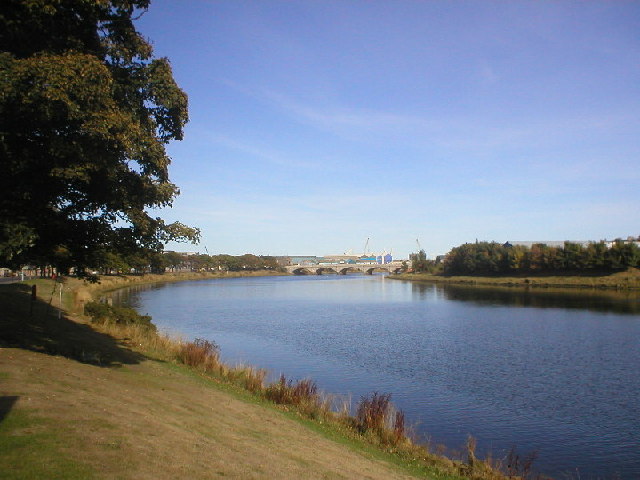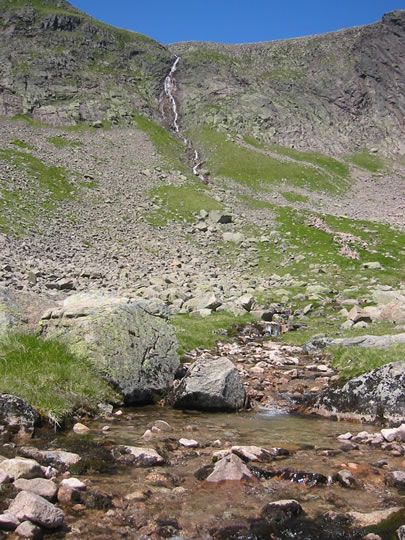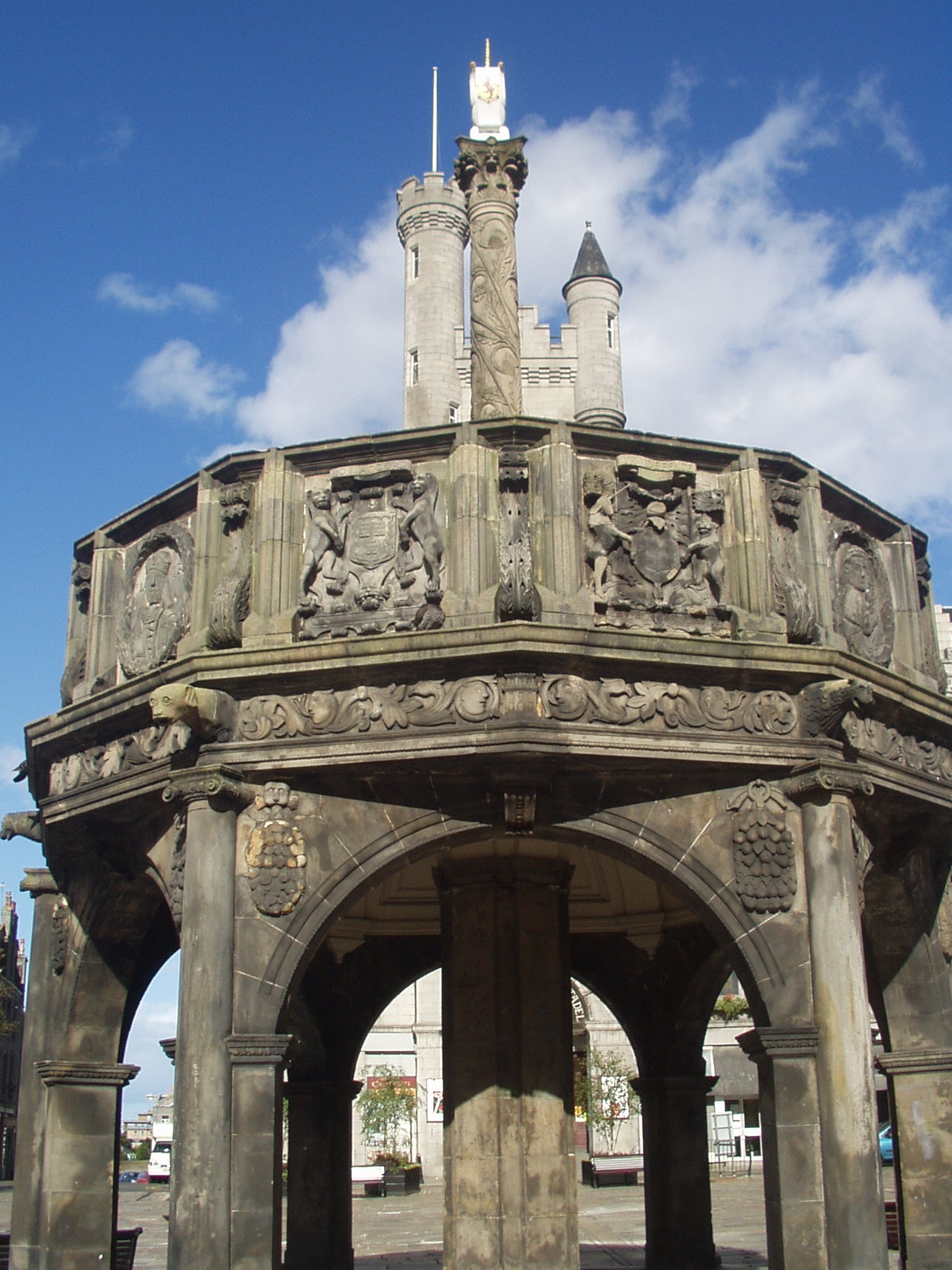|
River Dee Ferry Boat Disaster
The River Dee Ferry Boat Disaster occurred on 5 April 1876. Thirty two people drowned in the mouth of the River Dee, Aberdeenshire, Scotland when their ferry boat capsized. Overcrowding, fast flowing current and a poorly spliced wire rope were blamed. Context The city of Aberdeen lies at the mouth of the River Dee in North East Scotland. This is a tidal part of the river and can be subject to powerful currents. In 1876 the Royal Burgh of Torry was distinct from Aberdeen and was found on the south bank of the river. Aberdeen lay on the north bank. In 1891 Torry was incorporated into the city of Aberdeen. The ferry route was a busy and profitable route between the Pocra Quay on the North and Torry on the south. It had operated for centuries. At the time of the accident, the big ferry boat was operated by a pulley system, attached by a rope to each river bank. This allowed it to be pulled across the river without the need for an engine, sails or rudder on the boat. ... [...More Info...] [...Related Items...] OR: [Wikipedia] [Google] [Baidu] |
River Dee, Aberdeenshire
The River Dee ( gd, Uisge Dhè) is a river in Aberdeenshire, Scotland. It rises in the Cairngorms and flows through southern Aberdeenshire to reach the North Sea at Aberdeen. The area it passes through is known as Deeside, or Royal Deeside in the region between Braemar and Banchory because Queen Victoria came for a visit there in 1848 and greatly enjoyed herself. She and her husband, Prince Albert, built Balmoral Castle there which replaced an older castle. Deeside is a popular area for tourists, due to the combination of scenic beauty and historic and royal associations. It is part of the Cairngorms National Park, and the Deeside and Lochnagar National Scenic Area. The Dee is popular with anglers and is one of the most famous salmon fishing rivers in the world. The New Statistical Account of Scotland attributed the name Dee as having been used as early as the second century AD in the work of the Alexandrian geographer Claudius Ptolemy, as ''Δηοῦα'' (=Deva), meaning ... [...More Info...] [...Related Items...] OR: [Wikipedia] [Google] [Baidu] |
Tacksman
A tacksman ( gd, Fear-Taic, meaning "supporting man"; most common Scots spelling: ''takisman'') was a landholder of intermediate legal and social status in Scottish Highland society. Tenant and landlord Although a tacksman generally paid a yearly rent for the land let to him (his "tack"), his tenure might last for several generations. He would often be related to his landlord and might, for example, represent a cadet branch of the family of the clan chief. The tacksman in turn would let out his land to sub-tenants, but he might keep some in hand himself. Dr Johnson defined the class in this manner: The three fundamental obligations traditionally imposed on tacksmen were grassum (a premium payable on entering into a lease), rental (either in kind, or in money, which was designated "tack-duty"), and the rendering of military service.Alexander Nicholson, ''History of Skye'' (3rd edition, Islands Book Trust, 2012), at pages 127 to 128. Inheritance As described by James Mitchell: ... [...More Info...] [...Related Items...] OR: [Wikipedia] [Google] [Baidu] |
Transport Disasters In Scotland
Transport (in British English), or transportation (in American English), is the intentional movement of humans, animals, and goods from one location to another. Modes of transport include air, land (rail and road), water, cable, pipeline, and space. The field can be divided into infrastructure, vehicles, and operations. Transport enables human trade, which is essential for the development of civilizations. Transport infrastructure consists of both fixed installations, including roads, railways, airways, waterways, canals, and pipelines, and terminals such as airports, railway stations, bus stations, warehouses, trucking terminals, refueling depots (including fueling docks and fuel stations), and seaports. Terminals may be used both for interchange of passengers and cargo and for maintenance. Means of transport are any of the different kinds of transport facilities used to carry people or cargo. They may include vehicles, riding animals, and pack animals. Vehicles may inclu ... [...More Info...] [...Related Items...] OR: [Wikipedia] [Google] [Baidu] |
1876 In Scotland
Events from the year 1876 in Scotland. Incumbents Law officers * Lord Advocate – Edward Strathearn Gordon until July; then William Watson * Solicitor General for Scotland – William Watson; then John Macdonald Judiciary * Lord President of the Court of Session and Lord Justice General – Lord Glencorse * Lord Justice Clerk – Lord Moncreiff Events * 14 February – Alexander Graham Bell files a patent for the telephone in the United States. * 19 February – Partick Thistle F.C. play their first match. * 5 April – River Dee Ferry Boat Disaster: 32 drown. * 18 June – promenade on the roof of Waverley Market opens in Edinburgh; this year also West Princes Street Gardens pass to the city's council as a public park. * 17 October – St Enoch railway station officially opens in Glasgow. * 3 November – McLean Museum opens in Greenock. * William Forbes Skene's ''Celtic Scotland: a History of Ancient Alban'' begins publication in Edinburgh. * Camp Coffee is firs ... [...More Info...] [...Related Items...] OR: [Wikipedia] [Google] [Baidu] |
Maritime Incidents In April 1876
Maritime may refer to: Geography * Maritime Alps, a mountain range in the southwestern part of the Alps * Maritime Region, a region in Togo * Maritime Southeast Asia * The Maritimes, the Canadian provinces of Nova Scotia, New Brunswick, and Prince Edward Island * Maritime County, former county of Poland, existing from 1927 to 1939, and from 1945 to 1951 * Neustadt District, Reichsgau Danzig-West Prussia, known from 1939 to 1942 as ''Maritime District'', a former district of Reichsgau Danzig-West Prussia, Nazi Germany, from 1939 to 1945 * The Maritime Republics, thalassocratic city-states on the Italian peninsula during the Middle Ages Museums * Maritime Museum (Belize) * Maritime Museum (Macau), China * Maritime Museum (Malaysia) * Maritime Museum (Stockholm), Sweden Music * ''Maritime'' (album), a 2005 album by Minotaur Shock * Maritime (band), an American indie pop group * "The Maritimes" (song), a song on the 2005 album ''Boy-Cott-In the Industry'' by Classified * "Maritime" ... [...More Info...] [...Related Items...] OR: [Wikipedia] [Google] [Baidu] |
Shipwrecks In Rivers
A shipwreck is the wreckage of a ship that is located either beached on land or sunken to the bottom of a body of water. Shipwrecking may be intentional or unintentional. Angela Croome reported in January 1999 that there were approximately three million shipwrecks worldwide (an estimate rapidly endorsed by UNESCO and other organizations). When a ship's crew has died or abandoned the ship, and the ship has remained adrift but unsunk, they are instead referred to as ghost ships. Types Historic wrecks are attractive to maritime archaeologists because they preserve historical information: for example, studying the wreck of revealed information about seafaring, warfare, and life in the 16th century. Military wrecks, caused by a skirmish at sea, are studied to find details about the historic event; they reveal much about the battle that occurred. Discoveries of treasure ships, often from the period of European colonisation, which sank in remote locations leaving few livin ... [...More Info...] [...Related Items...] OR: [Wikipedia] [Google] [Baidu] |
History Of Aberdeen
There has been a human presence in the area of Aberdeen since the Stone Age. Aberdeen as a city, grew up as two separate burghs: Old Aberdeen, the university and cathedral settlement, at the mouth of the River Don; and New Aberdeen, a fishing and trading settlement where the Denburn entered the Dee estuary. Pre-1136 Aberdeen was first settled by hunter-gatherers around 6000 BC, who established themselves around the mouths of the river Dee and river Don. Around 2000 BC the Beaker People, who built the mysterious stone circles that can be found in the Aberdeenshire area, arrived from the Rhine lands. 400 BC saw Celtic migration to the area from the north of Scotland. The Romans arrived in Aberdeenshire in the first century AD. Agricola, the Roman governor of Britannia, led a force of some 40,000 men into Caledonia in 84 AD. They fought and defeated the united armies of the Picts in the Battle of Mons Graupius, near the peak of Bennachie in Aberdeenshire. After the Romans lef ... [...More Info...] [...Related Items...] OR: [Wikipedia] [Google] [Baidu] |
List Of United Kingdom Disasters By Death Toll
The following list of disasters in Great Britain and Ireland is a list of major disasters (excluding acts of war) which relate to the United Kingdom or Ireland, or to the states that preceded them, or that involved their citizens, in a definable incident or accident such as a shipwreck, where the loss of life was forty or more. Over 200 fatalities 100–199 fatalities Fewer than 100 fatalities See also * European windstorm * List of accidents and disasters by death toll (worldwide) * List of accidents and incidents involving commercial aircraft * List of disasters in Antarctica by death toll * List of disasters in Australia by death toll * List of disasters in Canada by death toll * List of disasters in Croatia by death toll * List of disasters in New Zealand by death toll * List of disasters in Poland by death toll * List of disasters in the United States by death toll * List of fires * List of lifeboat disasters in Britain and Ireland * List of natural disasters i ... [...More Info...] [...Related Items...] OR: [Wikipedia] [Google] [Baidu] |
Queen Victoria Bridge
Queen Victoria Bridge, also known as Victoria Bridge, is a road bridge across the River Dee linking the main part of the City of Aberdeen with Torry and the southern areas of the city. It was opened in May 1881. Built by Aberdeen City Council and partly funded by public subscription, it was constructed partly in response to the River Dee ferryboat disaster The River Dee Ferry Boat Disaster occurred on 5 April 1876. Thirty two people drowned in the mouth of the River Dee, Aberdeenshire, Scotland when their ferry boat capsized. Overcrowding, fast flowing current and a poorly spliced wire rope wer ... of 5 April 1876. References Bridges in Aberdeen Bridges completed in 1881 1881 establishments in Scotland {{UK-bridge-struct-stub ... [...More Info...] [...Related Items...] OR: [Wikipedia] [Google] [Baidu] |
The Dee By Victoria Bridge - Geograph
''The'' () is a grammatical article in English, denoting persons or things that are already or about to be mentioned, under discussion, implied or otherwise presumed familiar to listeners, readers, or speakers. It is the definite article in English. ''The'' is the most frequently used word in the English language; studies and analyses of texts have found it to account for seven percent of all printed English-language words. It is derived from gendered articles in Old English which combined in Middle English and now has a single form used with nouns of any gender. The word can be used with both singular and plural nouns, and with a noun that starts with any letter. This is different from many other languages, which have different forms of the definite article for different genders or numbers. Pronunciation In most dialects, "the" is pronounced as (with the voiced dental fricative followed by a schwa) when followed by a consonant sound, and as (homophone of the archaic ... [...More Info...] [...Related Items...] OR: [Wikipedia] [Google] [Baidu] |
Royal Navy
The Royal Navy (RN) is the United Kingdom's naval warfare force. Although warships were used by English and Scottish kings from the early medieval period, the first major maritime engagements were fought in the Hundred Years' War against France. The modern Royal Navy traces its origins to the early 16th century; the oldest of the UK's armed services, it is consequently known as the Senior Service. From the middle decades of the 17th century, and through the 18th century, the Royal Navy vied with the Dutch Navy and later with the French Navy for maritime supremacy. From the mid 18th century, it was the world's most powerful navy until the Second World War. The Royal Navy played a key part in establishing and defending the British Empire, and four Imperial fortress colonies and a string of imperial bases and coaling stations secured the Royal Navy's ability to assert naval superiority globally. Owing to this historical prominence, it is common, even among non-Britons, to ref ... [...More Info...] [...Related Items...] OR: [Wikipedia] [Google] [Baidu] |
Board Of Trade
The Board of Trade is a British government body concerned with commerce and industry, currently within the Department for International Trade. Its full title is The Lords of the Committee of the Privy Council appointed for the consideration of all matters relating to Trade and Foreign Plantations, but is commonly known as the Board of Trade, and formerly known as the Lords of Trade and Plantations or Lords of Trade, and it has been a committee of the Privy Council of the United Kingdom. The board has gone through several evolutions, beginning with extensive involvement in colonial matters in the 17th century, to powerful regulatory functions in the Victorian Era and early 20th century. It was virtually dormant in the last third of 20th century. In 2017, it was revitalised as an advisory board headed by the International Trade Secretary who has nominally held the title of President of the Board of Trade, and who at present is the only privy counsellor of the board, the other m ... [...More Info...] [...Related Items...] OR: [Wikipedia] [Google] [Baidu] |





.png)
